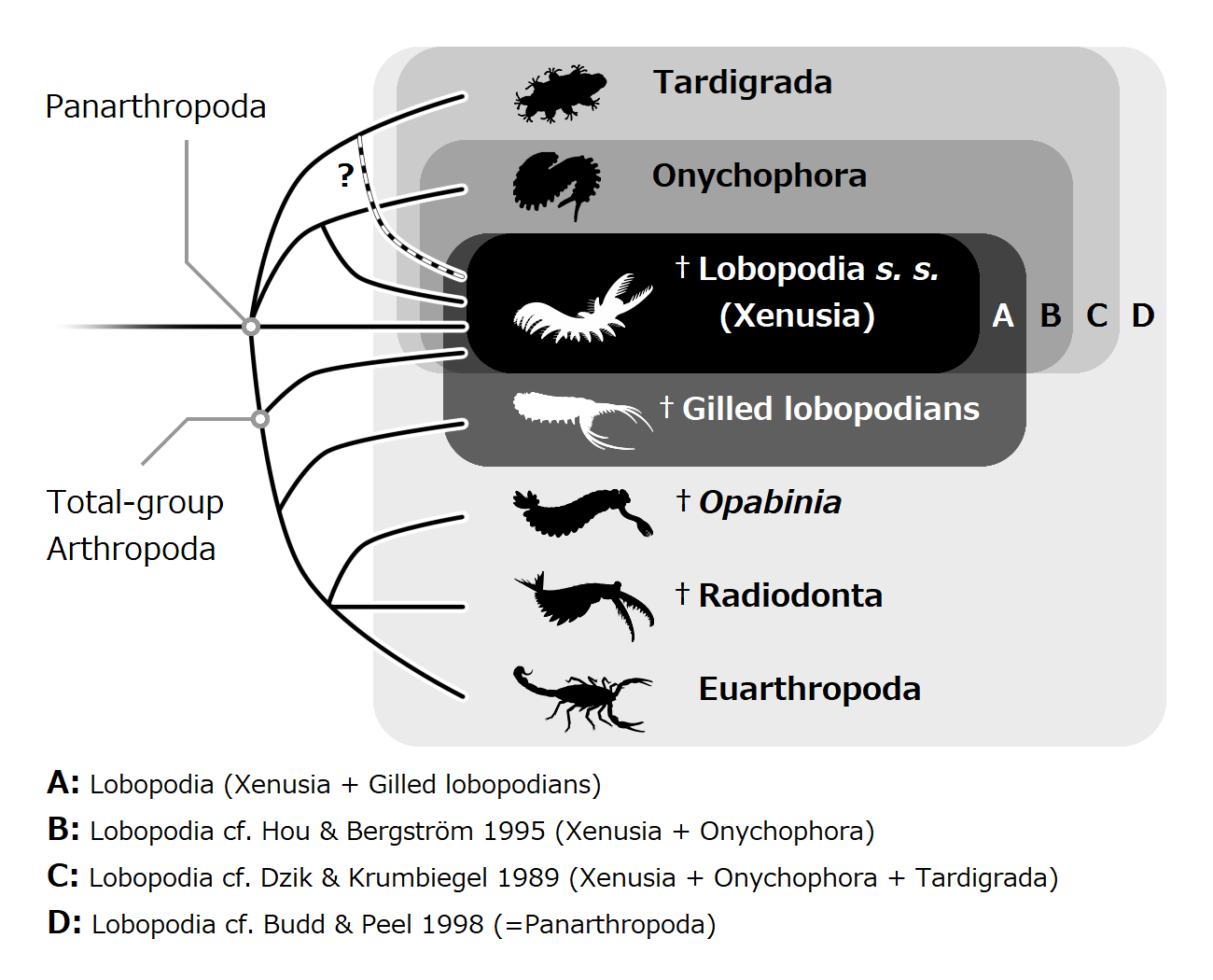|
Heteronomous Annulation
Heteronomous annulation is a characteristic of some arthropods. It means that segments are differentiated from one another, each having different form so as to serve a different function – for instance, using some limbs for walking and others for feeding. The trait is first observed in the armoured lobopods. It is thought to be the precursor to segmentation in arthropods, and perhaps resulted from the need to produce serially repeated defensive structures (spines). It can be studied using homeotic genes. It is believed to be a trait found in the most recent common ancestor of Panarthropoda. References {{DEFAULTSORT:Heteronomous Annulation Arthropod anatomy ... [...More Info...] [...Related Items...] OR: [Wikipedia] [Google] [Baidu] |
Arthropod
Arthropods (, (gen. ποδός)) are invertebrate animals with an exoskeleton, a Segmentation (biology), segmented body, and paired jointed appendages. Arthropods form the phylum Arthropoda. They are distinguished by their jointed limbs and Arthropod cuticle, cuticle made of chitin, often Mineralization (biology), mineralised with calcium carbonate. The arthropod body plan consists of segments, each with a pair of appendages. Arthropods are bilaterally symmetrical and their body possesses an exoskeleton, external skeleton. In order to keep growing, they must go through stages of moulting, a process by which they shed their exoskeleton to reveal a new one. Some species have wings. They are an extremely diverse group, with up to 10 million species. The haemocoel, an arthropod's internal cavity, through which its haemolymph – analogue of blood – circulates, accommodates its interior Organ (anatomy), organs; it has an open circulatory system. Like their exteriors, the internal or ... [...More Info...] [...Related Items...] OR: [Wikipedia] [Google] [Baidu] |
Segmentation (biology)
Segmentation in biology is the division of some animal and plant body plans into a series of repetitive segments. This article focuses on the segmentation of animal body plans, specifically using the examples of the taxa Arthropoda, Chordata, and Annelida. These three groups form segments by using a "growth zone" to direct and define the segments. While all three have a generally segmented body plan and use a growth zone, they use different mechanisms for generating this patterning. Even within these groups, different organisms have different mechanisms for segmenting the body. Segmentation of the body plan is important for allowing free movement and development of certain body parts. It also allows for regeneration in specific individuals. Definition Segmentation is a difficult process to satisfactorily define. Many taxa (for example the molluscs) have some form of serial repetition in their units but are not conventionally thought of as segmented. Segmented animals are ... [...More Info...] [...Related Items...] OR: [Wikipedia] [Google] [Baidu] |
Lobopod
The lobopodians, members of the informal group Lobopodia (from the Greek, meaning "blunt feet"), or the formally erected phylum Lobopoda Cavalier-Smith (1998), are panarthropods with stubby legs called lobopods, a term which may also be used as a common name of this group as well. While the definition of lobopodians may differ between literatures, it usually refers to a group of soft-bodied, worm-like fossil panarthropods such as '' Aysheaia'' and ''Hallucigenia''. The oldest near-complete fossil lobopodians date to the Lower Cambrian; some are also known from Ordovician, Silurian and Carboniferous Lagerstätten. Some bear toughened claws, plates or spines, which are commonly preserved as carbonaceous or mineralized microfossils in Cambrian strata. The grouping is considered to be paraphyletic, as the three living panarthropod groups (Arthropoda, Tardigrada and Onychophora) are thought to have evolved from lobopodian ancestors. Definitions The Lobopodian concept varies fr ... [...More Info...] [...Related Items...] OR: [Wikipedia] [Google] [Baidu] |
Most Recent Common Ancestor
In biology and genetic genealogy, the most recent common ancestor (MRCA), also known as the last common ancestor (LCA) or concestor, of a set of organisms is the most recent individual from which all the organisms of the set are descended. The term is also used in reference to the ancestry of groups of genes ( haplotypes) rather than organisms. The MRCA of a set of individuals can sometimes be determined by referring to an established pedigree. However, in general, it is impossible to identify the exact MRCA of a large set of individuals, but an estimate of the time at which the MRCA lived can often be given. Such ''time to most recent common ancestor'' (''TMRCA'') estimates can be given based on DNA test results and established mutation rates as practiced in genetic genealogy, or by reference to a non-genetic, mathematical model or computer simulation. In organisms using sexual reproduction, the ''matrilineal MRCA'' and ''patrilineal MRCA'' are the MRCAs of a given populati ... [...More Info...] [...Related Items...] OR: [Wikipedia] [Google] [Baidu] |
Panarthropoda
Panarthropoda is a proposed animal clade containing the extant phyla Arthropoda, Tardigrada (water bears) and Onychophora (velvet worms). Panarthropods also include extinct marine legged worms known as lobopodians ("Lobopodia"), a paraphyletic group where the last common ancestor and basal members ( stem-group) of each extant panarthropod phylum are thought to have risen. However the term "Lobopodia" is sometimes expanded to include tardigrades and onychophorans as well. Common characteristics of the Panarthropoda include a segmented body, paired ladder-like, ventral nervous system, and the presence of paired appendages correlated with body segments. Taxonomy Not all studies support the monophyly of Panarthropoda, but most do, including neuroanatomical, phylogenomic and palaeontological studies. At least a close relationship between onychophorans and arthropods is widely agreed upon, but the position of tardigrades is more controversial. Some phylogenomic studies ... [...More Info...] [...Related Items...] OR: [Wikipedia] [Google] [Baidu] |


